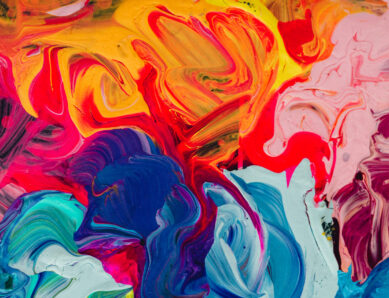Spring has sprung, and the sun is shining on your tired and shabby office decor. It’s high time to revamp it, you think – and, while you’re at it, why not spruce up that dated logo, too?
This is easier said than done, of course. It’s tricky enough to choose a color for your kitchen wall that your partner or roommate doesn’t hate, so how do you begin to pick the shade that represents your business to the entire world, and that doesn’t make your co-workers “see red?”
We all have an emotional relationship to color – think about the last time you were “tickled pink,” felt “a little blue,” or were “green with envy,” for example.
Clearly, color has a powerful effect on us. This has led to tall tales about its impact, including one survey which claimed that men who wear pink shirts benefit from increased confidence and a higher salary!
But other commentators, like marketing strategist Gregory Ciotti, point out that our responses to color are not universal; they are affected by our experiences, context and culture, too. And yet, even when we take these factors into account, evidence suggests that color can quickly and unconsciously influence our purchasing decisions, and our attitude to products and brands.
So, how can you use color to your advantage? And which colors will serve you best? Let’s take a look…
Red
From a marketing and branding perspective, red certainly grabs our attention. But it can also evoke feelings of passion, anger, and even danger. So, make sure that the color you choose fits the brand image that you want to project.
Red can also increase heart rate and blood pressure. A red scheme in your office might help to keep your team members motivated and active, but it may not be the best option if you value peace and serenity!
Blue
Blue, on the other hand, prompts thoughts of seascapes and tranquil lakes, and is known for its calming qualities. It’s associated with stability, trust and loyalty. But, when you’re up against “blue giants” like Ikea, Facebook and PayPal, it can be difficult to make a blue logo stand out.
Blue can encourage focus. If you work from home and you struggle to maintain your concentration, a blue workspace could help. But, in an office, avoid going overboard with blue if you don’t want your space to look too “corporate.”
Green
Green is often used to indicate an environmentally friendly brand. Nothing wrong with that, but it may not be the primary message that you want to convey. Nevertheless, green is a good choice if you want to present a feeling of security, durability and strength.
Green works well in offices as it is, quite literally, easy on the eyes. It won’t cause visual fatigue, and it can help to freshen up even the dullest of cubicles. Green may also help to reduce anxiety, and plants are an easy way to introduce more of it to your workspace. Some plants help to clean the air, too.
Yellow
Yellow is another attention-grabber. It can provide a feeling of movement and speed, which is why it’s a popular choice for fast-food chains and car manufacturers. It’s also known to stimulate the appetite, so bear this in mind if you don’t want your colleagues to keep popping out for snacks!
Used in moderation, yellow has a sense of fun and happiness. It can be a great addition to creative workspaces, as it can encourage the free flow of ideas. Just steer clear of the more eye-watering shades! And be cautious when you use bright yellows on your products, or they could wind up looking more like warning signs.
And, as with all colors, make sure you’re aware of cultural differences. Yellow might make many think of sunshine and daisies, but in Egypt it’s the color of mourning.
Black
Black gives a sense of authority and elegance, and it can make your products look instantly more expensive and stylish. A monochrome colorway is a surefire way to create a simple and sleek brand identity.
And, perhaps surprisingly, it’s also a popular choice for office decor, as it gives the impression of power and sophistication. But don’t take it too far – an office that looks like a Bond villain’s lair may be off-putting to clients and prospective employees. You can avoid the “dungeon” look by adding accents of brighter, less intimidating hues.
So, don’t underestimate the power of color when you redecorate your offices or redesign your branding. But remember that everyone responds differently, and there are no hard-and-fast rules. If in doubt, ask yourself what different colors mean to you. You might be surprised by your answer!
How did you choose the colors that represent your brand? What feedback did you get from customers, clients and colleagues? Share your success stories (or tales of disaster) in the Comments, below!




Comments
izmir taşımacılık firmaları says
2 years agoA big thank you for your blog.Really looking forward to read more. Want more.